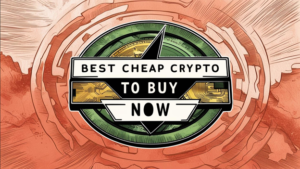Pandora, the Inaugural ERC-404 Token, Surges 12,000% as Supporters Embrace the Experimental Ethereum Protocol

The first token based on a new, unofficial, and experimental type of Ethereum standard has created a new multi-million sub-asset class in the crypto market.
Pandora {{PANDORA}}, the first of the so-called “ERC-404” tokens, reached highs of $32,000 on Friday morning, up from a low of $250 in just under a week. It has a supply of only 8,000 tokens and traded around $76 million in volumes in the past 24 hours.
Several projects have jumped on the hype and issued their own versions of ERC-404 tokens.
Some have airdropped a small part of their token supply to Pandora holders, increasing demand for the token and creating buzz for their own projects. Others have launched on other blockchains such as Arbitrum and Solana in a bid to be the first mover in a different ecosystem.
ERC-404 combines the popular ERC-20 and ERC-721 standards for token issuance on Ethereum and non-fungible tokens (NFTs), respectively, into one that allows developers to create fractionalized NFT collections that can be freely traded and used in the open market.
In their current form, NFTs exist as one-for-one assets, unlike tokens, where holders can buy a fraction of a whole. While fractionalized NFTs do exist, they typically depend on an entity that locks up those NFTs in a wallet and issues tokens that represent the NFT. These tokens are then freely traded and may not accurately match the locked NFT’s value.
That’s one of the key problems ERC-404 sets out to solve. It allows multiple wallets to directly own a single NFT, and, in the future, create a use case where that specific exposure can be tokenized and used to take out loans or stake holdings.
“People in crypto hate friction,” ctrl, one of the developers of Pandora and ERC-404, told CoinDesk in a Telegram message.
“Every solution before ERC-404 had too much friction, usually being a wrapping solution that abstracted the original NFT that people wanted to fractionalize or make liquid,” he said. “Collectors hated this, and it limited adoption significantly. ERC-404s have these functions by default and don’t rely on confusing third-party protocols and solutions,” he added.
ERC-404 developers say on their GitHub page that while the two standards it combines “are not designed to be mixed,” the project “strives to do so in as robust a manner as possible while minimizing tradeoffs.”
“This standard is entirely experimental and unaudited, while testing has been conducted in an effort to ensure execution is as accurate as possible,” developer 0xacme said on Github. “The nature of overlapping standards, however, does imply that integrating protocols will not fully understand their mixed function.”
However, ERC-404 is not an officially recognized Ethereum token standard, a set of rules and protocols that define how digital tokens should behave and interact within a specific blockchain ecosystem.
The team is actively working on an Ethereum Improvement Proposal (EIP) for the token standard. EIP is the process of introducing a new feature or functionality to Ethereum. The EIP process can take a while and isn’t quick to do, developers added.
“We really need to make sure we get it right and approach this with a bulletproof proposal,” ctrl said. “Considering we’re this weird nascent thing that’s spawned from a very informal side of the market.”
If approved, the standard will be an “official” one recognized by the Ethereum Foundation, a nonprofit that maintains the Ethereum blockchain, for use within the Ethereum ecosystem as an agreed-upon framework that is compatible with Ethereum-based applications.
Source link
#Pandora #Token #ERC404 #Zoomed #Enthusiasts #Latch #Experimental #Ethereum #Standard





